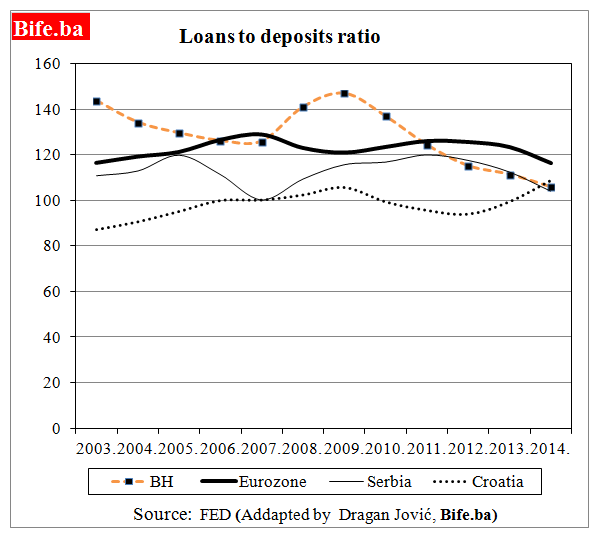Loans and deposits are the two main banking aggregates. Deposits are the main source of bank financing and loans are the main banking product. The loans to deposits ratio is one of the many indicators that measure the liquidity of banks (LtD can be multiplied by 100). If the LtD lower bank is more liquid, and vice versa. If the LtD is above 100, the bank has generated more loans than it has a deposit, which leads to a higher liquidity risk if depositors suddenly begin to make deposits. LtD is also a measure of credit risk from the aspect of bank creditors. Credit risk in this sence is the risk that creditors will be left without deposits and savings held by banks. If a bank has an extremely high LtD, its business model may be risky for creditors. LtD can also be viewed as a measure of prudence/conservatism of banks’ operations or the banking system as a whole. If the LtD is lower bank is more conservative, and its business model is more cautious. Such a bank keeps more accounts on the safety of savings deposits than a bank with a high LtD. LtD also represents a measure of the restrictiveness/expansiveness of the credit policy of banks. If a bank has a LtD above 100, it can be said that its credit policy is expansive, and if LtD is below 100 it menas that the bank has imposed restrictions on the transformation of deposits into loans.
Measured with LtD (loans to the private sector in relation to total deposits) of BH banks until 2009 (LtD = 147) pursued an extremely expansive credit policy, followed by an expansion trend. On average, Croatian banks had a neutral credit policy (average LtD about 100), and the Serbian banks during the crisis years (2008-2011) have an expansive credit policy. The LtD of the eurozone did not change significantly, and on average it is 122. Whatever the LtD variability in the period 2003-2014. г. (which can be seen with the naked eye), he is the biggest in our country, Bosnia and Herzegovina. Why? One of the reasons is that the BH central bank cannot give loans and in this way, directly and indirectly, contributes to the equalization of the LtD route, ie, reduction of the LtD oscillation.



